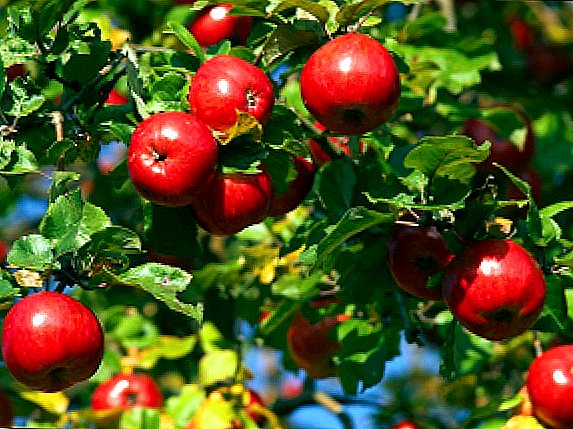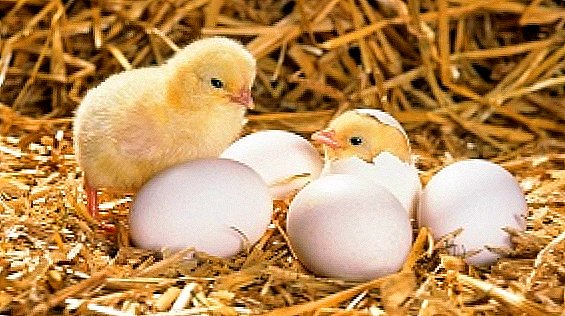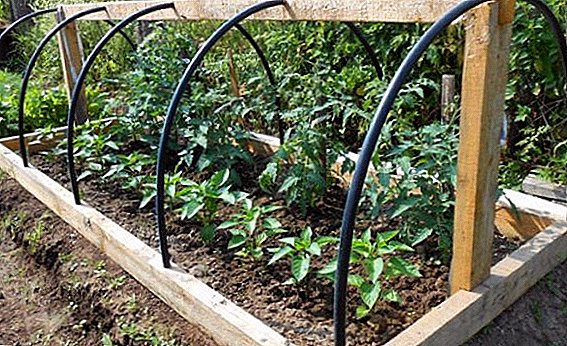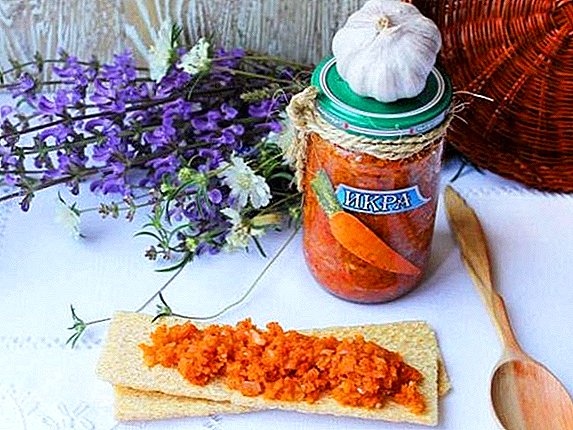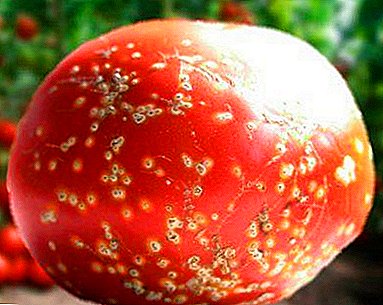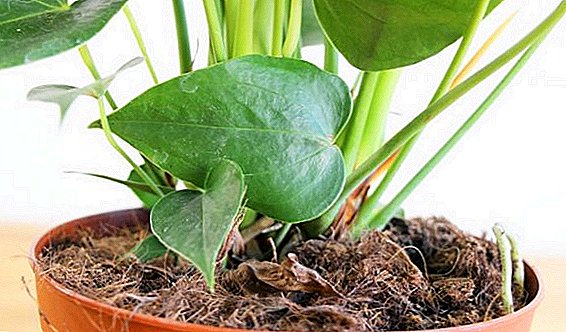 Anthurium - a very popular indoor plant. In addition to decorative, it is a very useful flower, it cleans the air in the room, like an ionizer. It happens that the anthurium grieves the owners that does not bloom. In this article we will learn the reasons why anthurium does not bloom, and what to do to make it bloom.
Anthurium - a very popular indoor plant. In addition to decorative, it is a very useful flower, it cleans the air in the room, like an ionizer. It happens that the anthurium grieves the owners that does not bloom. In this article we will learn the reasons why anthurium does not bloom, and what to do to make it bloom.
Basic rules for the cultivation and care of anthurium
Anthurium is from tropical forests of South America. The plant absolutely does not tolerate sub-zero temperatures, is moisture and heat-loving. It is grown as a pot plant due to its large, leathery, dark green leaves and brightly colored bracts that are often mistaken for anthurium flowers. The height of the bush, depending on the variety, varies from 30 to 100 cm. The flowers are small, gathered in a high peduncle in the form of a yellow cone.  All the colors in which the leaves, bracts and flowers of this plant are painted, contrast quite strongly against each other, which creates a unique decorative effect of the plant. The flower must be irrigated, in which the root layer will always remain wet, but there will be no waterlogging of the soil and roots. Anthurium for good health requires a full and bright lighting, heat in the room and periodic feeding. An important factor is the provision of a rest period flower with a suitable temperature for this growth phase.
All the colors in which the leaves, bracts and flowers of this plant are painted, contrast quite strongly against each other, which creates a unique decorative effect of the plant. The flower must be irrigated, in which the root layer will always remain wet, but there will be no waterlogging of the soil and roots. Anthurium for good health requires a full and bright lighting, heat in the room and periodic feeding. An important factor is the provision of a rest period flower with a suitable temperature for this growth phase.
Did you know? In the world there are more than 600 varieties and hybrids of anthurium, which have differences in the shape and color of the leaves, as well as differing in color of the bract cover. The color of the bract can be scarlet, burgundy, brown, almost black, pink, cream, white or light green.
Why does not bloom anthurium
Anthurium may not bloom for a long time (or at all) if the conditions in which it is grown are not suitable for it. This may be an inappropriate microclimate, improper watering or improper application of top dressings, too tight a pot, an invasion of pests or the development of diseases. The grower needs to carefully analyze the conditions in which the anthurium grows, determine what is wrong, and make every effort to remedy this situation. 
Violation of microclimate
Anthurium feels well at a temperature of + 18 ... + 25 ° C. That is why the plant is not suitable for outdoor cultivation in our climate. It is not advisable even to take the pot in the summer, as is done with other flowers, on the terrace or courtyard, because the weather is unpredictable, and the anthurium does not tolerate even a temporary decrease in temperature below + 13 ° C.
In summer, the plant is set so that it does not get direct sunlight. The flower can be protected from sun rays by covering the window with a translucent curtain. Anthurium does not tolerate dry air. That is why a particularly unsuitable place in the winter for him is the location of the pot next to batteries or heating devices.
Find out which anthurium varieties are popular with gardeners.
In the hot summer months, a tropical plant needs to be moistened with air. It is advisable to spray the flower with water at intervals of two or three times a week. This procedure can be done with a spray (spray) or simply put the plant for a few minutes under a regular shower. 
Improper watering and fertilization
Another reason for the lack of flowering anthurium - improper fertilizer. If fertilizing contains higher doses of nitrogen, the plant rapidly begins to grow only the leaves, which occurs due to the restriction of the formation of flowers.
Important! In the summer, the anthurium is fed under the root every two weeks, in the winter months the frequency of dressings is significantly reduced, just one dressing per two months is enough.
Unsuitable pot
If the plant does not bloom (grows poorly) for several years, perhaps this is a signal that it is necessary to transplant into a larger pot with new soil. Accurate transplantation almost always brings good results. 
How to transplant anthurium:
- Optimally suitable substrate for it is the soil for the family of orchids or bromeliads, it can be purchased at garden stores.
- At the bottom of a new, more voluminous than the old, pot, put a layer of drainage of at least 4 cm. Drainage will prevent bogging of soil in the pot and root decay. As the drainage, you can use the clay pellets, fragments of clay or ceramic dishes. Also in the bottom of the pot should be provided with one or more holes for water flow. On top of claydite, the pot is filled with substrate for planting anthurium in 1/3 of the total volume.
- Immediately you need to separate the earthen clod with roots from the walls of the old pot. To do this, the outside of the pot can be easily knocked with the butt of a knife or with a knife blade between the inner walls and the earthy clod.
- After the earthy clod has separated, the pot is tilted 45 degrees so that the clod of earth slightly extends. In this case, the florist must hold the flower so that it does not break during this operation.
- Roots gently shake off old soil and inspect the root system for damaged or rotten roots. If they are found, they are cut out with a sharp knife or garden shears.
- Next, the bush is placed in the middle of the new planting capacity and the roots are covered with soil. The root neck of a flower is not buried in the ground. The soil around the flower after transplanting slightly compacted and moderately watered.
Did you know? Anthurium is a plant native to the tropical, humid and hot jungle. Some wild varieties are able to climb trees to the light as they grow.
Diseases and pests
Anthurium mainly suffers from fungal diseases, but sometimes viral infection occurs.
Possible fungal diseases of anthurium:
- Phytophthora - appears in the spots on the leaves, often progressing from the root along the stalks upwards. Gray mold may also develop, in which shoots become brown and soon wither.
- Rust - It appears as yellow-brown spots on the outer side of the leaves and spore clusters located on the underside of the leaf plate. The affected leaves are cut out near the ground and, if the disease has gone far, remove the entire bush.
- Mealy dew - fungal disease, symptoms are expressed in white powdery leaf covering. Mealy dew inhibits the growth of anthurium and after a while leads to its death.
To prevent the development of fungal diseases, anthurium can be sprayed with onion or garlic infusion, as well as the use of fungicides: “Strobe”, “Prestige”, “Horus”, “Fitosporin-M”, “Tiovit Jet”.  Viral diseases are manifested by an unusual change in color on the leaves or flowers, for example, mosaic patterns with green, gray, brown or red rings. There is no cure for viral diseases. Infected plants must be destroyed (preferably burned).
Viral diseases are manifested by an unusual change in color on the leaves or flowers, for example, mosaic patterns with green, gray, brown or red rings. There is no cure for viral diseases. Infected plants must be destroyed (preferably burned).
Important! Viral and fungal diseases spread from plant to plant by migratory insect pests.
Anthurium pests:
- Aphid - small insects living in large colonies, sucking sap plants, which leads to the death of leaves. Aphid covers the plant with its secretion, honey dew. Aphid excretion covers the leaves, thereby preventing photosynthesis - the basic life process of plants. The pest multiplies rapidly, its presence on the flower give out yellowing leaves. Aphids can be washed off with a stream of water, for example, in a bathtub under a shower, or the leaves and stems can be wiped with a sponge, thickly soaped with soap. You can also treat the plant with garlic extract on the leaf or chemical insecticides, such as "Aktara", "Connect", "Aktellik".
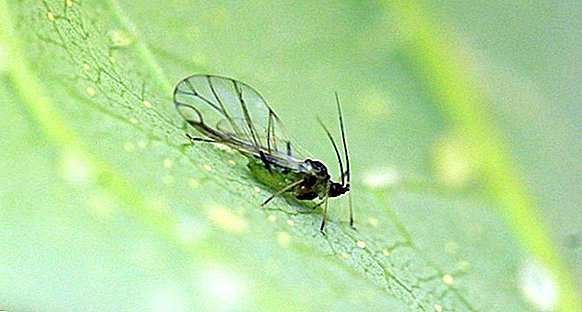
- Spider mites - very small insects with a body length not exceeding 0.6 mm. Adult ticks have a black color of chitin, and younger individuals are transparent. This pest is difficult to see without a magnifying glass. The weightless web on the underside of the leaves and in the axils of the stems testifies to its presence. The development of ticks is favored by the high temperature in the room and the humid air; therefore, during the period of tick control, it is desirable to reduce or even reduce the air humidification and reduce the temperature in the house. For their destruction apply treatment of the bush with insecticides: "Stop Tick", "Actofit", "Antikleshch."
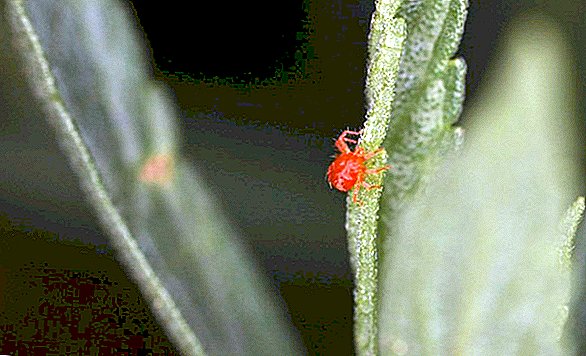
Other reasons
A tropical resident in suitable conditions may blossom 9-10 months a year. One of the conditions of flowering is the passage of the anthurium dormant period. In order to fall into a period of rest, the plant needs a decrease in temperature to + 16 ° C for 2-2.5 months.
Important! To soften the water in a watering tank, you can add a few drops of lemon juice.
Anthurium loves bright light, but does not tolerate exposure to direct sunlight on the leaves. If for a long time it is in full shade, you can not wait for flowering. A pot with a flower can stand on the window sill or opposite the window so as to receive full coverage. Any window sill, even the north one (with some restrictions), is suitable for its cultivation.
What to do to bloom anthurium at home
If it is correct to determine the reason why the inhabitant of the tropics does not bloom, it will be easy to correct the situation for the better. 
What should be done to anthurium bloom:
- Wrong lighting. It is necessary to transfer the pot with a flower to the place where the lighting is bright. It is necessary to carefully choose the location of the anthurium, because the excess sun can lead not only to the absence of flowering, but also to the discoloration of the leaves or the appearance of brown spots like burns on them. After moving the plant to another, less sunny place, the leaves return to their normal color for several days.
- Wrong watering. Anthurium loves systematic watering. But if you overdo it with irrigation, and the soil in the pot becomes too wet, the roots will begin to rot. It will also stop flowering. In order not to flood the plant, poor watering should be done every 2-3 days. The method is effective: if the soil is dried rather densely, for about a month the plant will be ready for lush flowering.
- Water too hard. Water quality also matters. Ideally, the anthurium should be watered with boiled, cooled water. The plant suffers from hard water having a high content of calcium and magnesium salts. All hard impurities disappear when boiling. Normal tap water, which is poured into a watering can and immediately supplied under the plant root, can also harm anthurium. It is necessary to fill the tank with water and leave for settling, and use the very next day. You can also water the flowers with filtered water.
- Insufficient lighting. Anthurium, installed on the northern windowsill, will not bloom without additional lighting. Such illumination can be organized by installing a floor lamp or a table lamp with a movable "neck". It is advisable to place a fitolamp or a cold-white LED light bulb in an electrical appliance.
- Inappropriate place. You can move the plant in space, perhaps it does not suit the place. It is advisable to move the pot for 10-14 days to another, well-lit place (preferably on the windowsill) and watch the plant, perhaps it will start to throw out the floral arrows.
- Incorrect dressing. You can not use feed with a high nitrogen content. If the plant needs fertilizer, it will be optimal to use fertilizer, rich in phosphorus and potassium, but with a limited dose of nitrogen. You can also feed plants with natural, organic fertilizers, such as coffee grounds or ground egg shells. These fertilizers are not enough to make over the ground, and it is necessary to mix it with the soil. To do this, the top of the soil substrate in a pot with a growing flower is carefully removed so as not to damage the root system, and mixed with natural fertilizers, and then returned to the pot.
Did you know? Potted plants grown in the house, clean the air from soot, cigarette smoke, serving as a kind of vegetable filter.
Useful tips from experienced gardeners
In home gardening there are several tricks, the use of which will facilitate the care of plants:
- To the top layer of the soil substrate is not so quickly dried, it is covered with mulch. As mulch, you can use slept tea leaves, coffee grounds.
- Potted flowers can be watered not only from the watering can under the root, but also arrange a wick for them. A narrow and long piece of wool is used as a wick, one end of which is placed in a jar of water for irrigation, and the other is placed in a pot, around the stem of the plant. The flower itself regulates irrigation, drawing water into the root layer as needed. Fit irrigation will solve the problem of irrigation during the long absence of owners.
- In order to treat a pest-infested bush in winter and not to carry it outside in the cold, it is suggested to put a large plastic bag on top of the bush, and then run a spray from the can with insecticide. The treated flower remains closed for 3-4 hours, after which the bag is removed and the surface of the leaves is washed with water under the shower.
 The solution is used fresh immediately after preparation. There are also tips on root-feeding anthurium with milk, which is held twice a month. Before feeding the milk is mixed with water 1: 1.
The solution is used fresh immediately after preparation. There are also tips on root-feeding anthurium with milk, which is held twice a month. Before feeding the milk is mixed with water 1: 1.Frequent mistakes when growing anthurium
Improper care will not allow the plant to bloom.
Read also about why the leaves turn yellow in anthurium.
If the anthurium has stopped blooming, then such moments may hinder its flowering:
- not enough bright lighting;
- direct sunlight on the leaves;
- the plant was not in a resting phase;
- watering too often or too often;
- the development of diseases;
- the presence of pests;
- excess nitrogen in the soil or lack of other nutrients.
Video: why does not bloom Anthurium




